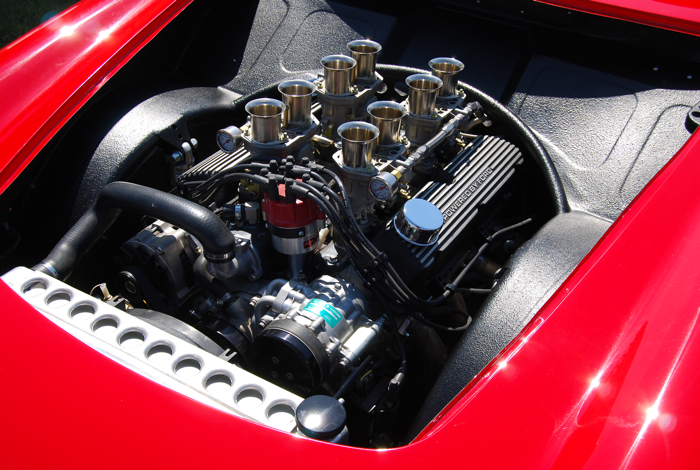Efficient and Powerful Small Vehicle Motor Efficiency Evaluation
Analyzing the efficiency of little automobile motors is a nuanced job that calls for a keen eye for detail and a deep understanding of vehicle design concepts. When it pertains to small vehicles, the equilibrium between performance and power is important for providing a driving experience that is both rewarding and affordable. By analyzing crucial metrics such as horse power and torque, along with examining fuel effectiveness, we can uncover insights into just how small auto engines can be maximized for peak efficiency. Furthermore, exploring future trends in tiny auto motor technology guarantees to introduce innovative techniques that can improve the landscape of automobile engineering.

Little Car Electric Motor Efficiency Metrics
In evaluating the performance of tiny cars and truck motors, key metrics such as acceleration, gas efficiency, and power outcome play an important role in determining their general efficiency and viability for various driving conditions - opel corsa engine. By examining these performance metrics comprehensively, makers, vehicle drivers, and automobile lovers can make educated decisions relating to the choice and optimization of tiny car motors to meet their particular needs and preferences.

Horsepower and Torque Analysis
With a basic duty in understanding small auto electric motor horsepower, torque and efficiency evaluation provides insight right into the engine's power shipment qualities. In the context of little cars and truck motors, horse power is vital for determining velocity, top speed, and overall performance. By comprehending the partnership between horse power and torque, automobile engineers can optimize engine performance to satisfy the specific requirements of small cars and truck applications.
Fuel Performance Examination
The analysis of fuel effectiveness in little auto electric motors plays a vital role in determining their ecological and economic impact. In tiny auto motors, where small size commonly associates with far better gas economic climate, different variables influence effectiveness.
To assess fuel effectiveness, metrics such as miles per gallon (MPG) are typically used. This dimension suggests the distance a car can take a trip each of gas. Little vehicle motors that achieve greater MPG scores are considered extra fuel-efficient, leading to price financial savings for drivers and lowered discharges that profit the environment. Producers constantly aim to boost gas effectiveness through developments in engine innovation, light-weight products, and wind resistant designs.

Optimizing Small Car Engine Performance
Enhancing the effectiveness of tiny car engines is vital in making the most of performance and minimizing operational expenses. Maximizing little cars and truck engine efficiency entails a holistic method that considers various elements such as engine design, fuel administration systems, and general car dynamics.
Another critical consider maximizing tiny cars and truck engine performance is the utilization of sophisticated modern technologies such as turbocharging or hybrid systems. These modern technologies can boost power output without compromising gas performance, giving an equilibrium in between performance and economic situation. Moreover, optimizing engine performance likewise entails improving official site burning efficiency, lowering frictional losses, and enhancing thermal administration systems.
Future Trends in Small Vehicle Motors
Because of advancing automotive innovations and the continuous search of optimal little automobile engine performance, an exploration of future fads in small cars and truck electric motors comes to be essential - opel corsa engine. One noticeable fad coming up is the enhancing integration of electrical powertrains in small cars and trucks. As the automotive industry changes in the direction of sustainability and decreased exhausts, more small cars and truck manufacturers are spending in electrical motor technology to enhance efficiency and ecological friendliness
Another considerable trend is the advancement of smaller yet extra powerful turbocharged engines for little automobiles. By scaling down engine capabilities and integrating turbocharging modern technology, car manufacturers can achieve higher power outcomes while maintaining fuel efficiency. This trend lines up with the expanding customer demand for little cars that provide a dynamic driving experience without compromising on fuel economic situation.
Furthermore, the appearance of crossbreed powertrains in little autos is anticipated to get traction in the future. Hybrid systems use the benefits of both inner burning engines and electric motors, visit this site right here providing enhanced efficiency and gas performance. As advancements in battery innovation proceed, little auto electric motors are most likely to come to be much more efficient and powerful, dealing with the evolving needs of customers and regulatory requirements for cleaner transport services.
Conclusion
In conclusion, the evaluation of little cars and truck motor efficiency metrics such as torque, fuel, and horse power performance is crucial in enhancing engine efficiency. By assessing these variables, manufacturers can boost the general efficiency and power outcome of little cars and truck motors (opel corsa engine). Future fads in small cars and truck motors are likely to focus on boosting performance while maintaining gas performance, making certain that little autos continue to be a economical and trusted news choice for customers
By examining key metrics such as horsepower and torque, as well as examining gas performance, we can reveal insights right into how small cars and truck engines can be optimized for peak efficiency. Maximizing tiny automobile engine performance includes an all natural approach that considers numerous factors such as engine layout, fuel monitoring systems, and total automobile dynamics.In light of progressing auto technologies and the constant pursuit of optimal little vehicle engine performance, an expedition of future patterns in small vehicle motors comes to be necessary.In conclusion, the evaluation of small vehicle motor efficiency metrics such as torque, horsepower, and fuel efficiency is essential in optimizing engine efficiency. Future fads in tiny automobile electric motors are likely to concentrate on improving performance while keeping gas efficiency, making certain that small automobiles continue to be a economical and trusted option for customers.